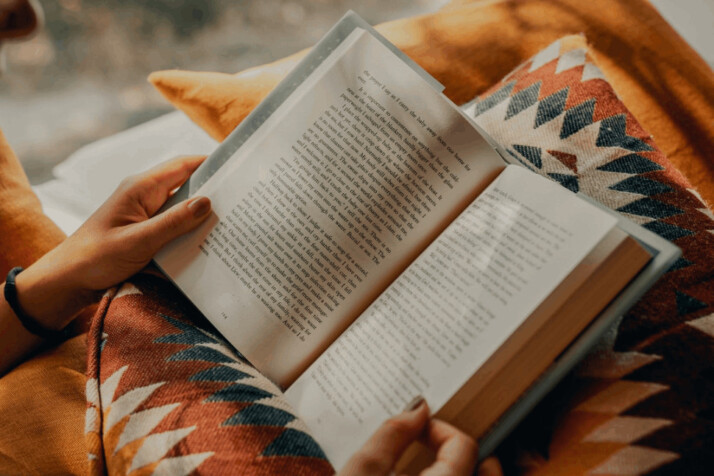Synthesis is the ability to use multiple perspectives, insights, pieces of information, and experiences to create a new whole. In general, synthesizing in reading is gathering chunks of material into a new unit that is cohesive, coherent, and meaningful.
It is an important skill to develop in readers of all ages as they develop their reading and writing comprehension. This article outlines six effective strategies of synthesizing in reading to teach students to analyze a passage better and gain a deeper understanding.
What Is Synthesizing in Reading?
Synthesizing entails blending concepts and reflecting on what you read rather than restating the key points from the text. This is a mental activity to transform meaning from separated symbols and form a new, more comprehensive perception of the material we are reading.
Moreover, synthesizing involves isolating or decoding terms and putting them together to form meaning. It aids reading because it encourages students to put new material into their own words and integrate it with their prior knowledge.
Is synthesizing difficult?
Teaching or mastering the process of synthesizing can be challenging. Plenty of materials are designed to give teachers a collection of resources to use in classroom planning and teaching. These books and resources include different sentence frames to incite thinking in children.
From digital to printable resources, numerous texts, notes, books, questions, and lessons can be used to support teachers and students. You can prompt questions from the books and let students analyze the meaning using the process of synthesizing. It enhances critical thinking activity in children.
Difference between Summarizing and Synthesizing
Summarizing and synthesizing are essential skills because they aid students in grasping what they read. It’s vital to comprehend that they are two distinct processes though they are both utilized as reading comprehension and research procedures. Each has a particular goal, method, and outcome.
Summarizing
If you have little time to read through the material and comprehend the main points, this close-reading practice can be helpful for oral assignments.
It involves picking out some of the text’s main points without analyzing the whole piece. This is a quick process that requires a high speed. It can assist you while listening to a large-text book without the need for thorough reading.
Synthesizing:
Synthesis is an advanced reading technique. It combines information to emphasize the key ideas and draw your conclusions. It contrasts and compares information from diverse sources.
Moreover, it reflects your knowledge of what the original authors wrote and lets you create something new. You synthesize bits and pieces from various sources into a single cohesive whole to gain a fresh perspective.

6 Effective Strategies for Synthesizing in Reading
Most people tend to read with the basic idea that the reader is focused on reading and understanding the text. Synthesizing refers to blending or fusing different thoughts and ideas to create a new one for the audience. Following are six different strategies for synthesizing in reading.
1. Look For Characteristic Patterns
Identifying a character’s trait is a way to begin finding the pattern in the text. Patterns can enable the reader to see the link between characters and places.
When considering plot or character, always “pair up” or work with one or more characters. Reading multiple paragraphs or even the entire chapter or story at a time will aid you in learning the characteristic patterns.
This technique allows students to build on their grasp of the plot and characters. They also actively build on what they read and can better synthesize than reading just one paragraph.
2. Watch out for Repeating Terms in Nonfiction
In a nonfiction book, repeating words are key to apprehending the text. They assist you in finding the themes and concepts in the piece and acknowledge what’s significant.
Try to isolate repeated words or phrases throughout the text and list them. These repeating terms could signify that the author wants you to comprehend the text in another way.
Looking for repetitions can be difficult and takes time. But it’s worth the effort because, without it, you might not grasp the book as thoroughly as you could.
3. Pay Attention to Unusual Behavior
The most effective way to absorb the meaning of the information you read is to take the time to really process what you read. Try to recognize the unusual behavior and emotions amongst the characters as they interact.
While reading, pay attention to the changes in the characters’ behavior. Think and learn about what the character is doing differently than before in a particular scene.
Then make a hypothesis or theory about the character by contrasting their unique behavior with later and earlier actions.
4. Identify the Main Idea of the Passage
One effective method for synthesizing in reading is to go beyond the topic as it is introduced in the text. When reading, try to synthesize the subject by classifying and generalizing information, recognizing patterns, and interpreting the text based on the context.
Do your best to pinpoint the main idea of a passage and analyze the content symbolically. Make sure to consider context clues and text evidence in the passage.
Point out patterns within the topic, both primary and secondary, and use these patterns to synthesize the work. Breaking the text up helps to avoid jumping to conclusions.
5. Search for textual contradictions.
This strategy enables readers to realize the cohesion and structure of the text. When readers see the textual contradictions, they can better know how the individual pieces pull together and how different sections connect.
Often these connections and meanings are not apparent at first. But it is critical to look at the relations between different parts of the text. When readers notice these connections on an inner level, it can enhance their understanding of the piece.
6. Highlight a significant turning point.
When reading non-fiction, it’s essential to highlight significant turning points. It will be easier to recall the piece of information.
In your reading, underline or highlight when you see a significant turning point or make a bold claim to emphasize the text.
These turning points are often marked by changes in topic, tone, or a new point of view. As a result, readers can immediately identify these connection points to synthesize the content better.
Wrapping Up
Synthesizing is all about critically analyzing the text you are reading and recognizing the central idea or main points. It is a skill that requires practice to master. We can use it as a teaching tool in college and in courses for students to fully comprehend what they are reading.
This article will help you learn effective strategies for synthesizing and improving reading comprehension. Whether these skills are for your personal benefit or career, the time you invest will be worth it.
Explore All Readability Articles
What is Reading? — Making Sense of Letters and Symbols
When studying the English language, you should familiarize yourself with its different concepts. It includes spelling, vocabulary, grammar, and reading.…
What is Readability Score? — a Quick Guide
Your text should cater to all kinds of readers. When you’re writing an article that intends to reach various individuals,…
Causes of Reading Comprehension Problems
Reading comprehension is the ability to understand and interpret written words, connecting the information in the text with previous knowledge.…
What Is ZPD Reading Level?
Everyone unique and we all have a unique understanding of the world. So what should the level of difficulty be…
The Best ELL Strategies for Reading!
Non-native English speakers can be proficient readers in their original tongue. However, those who are enrolled in an ELL (English…
These Are the Best Practices in Reading!
Best practices have been a topic of discussion in the reading education community for a long time. Among these best…
